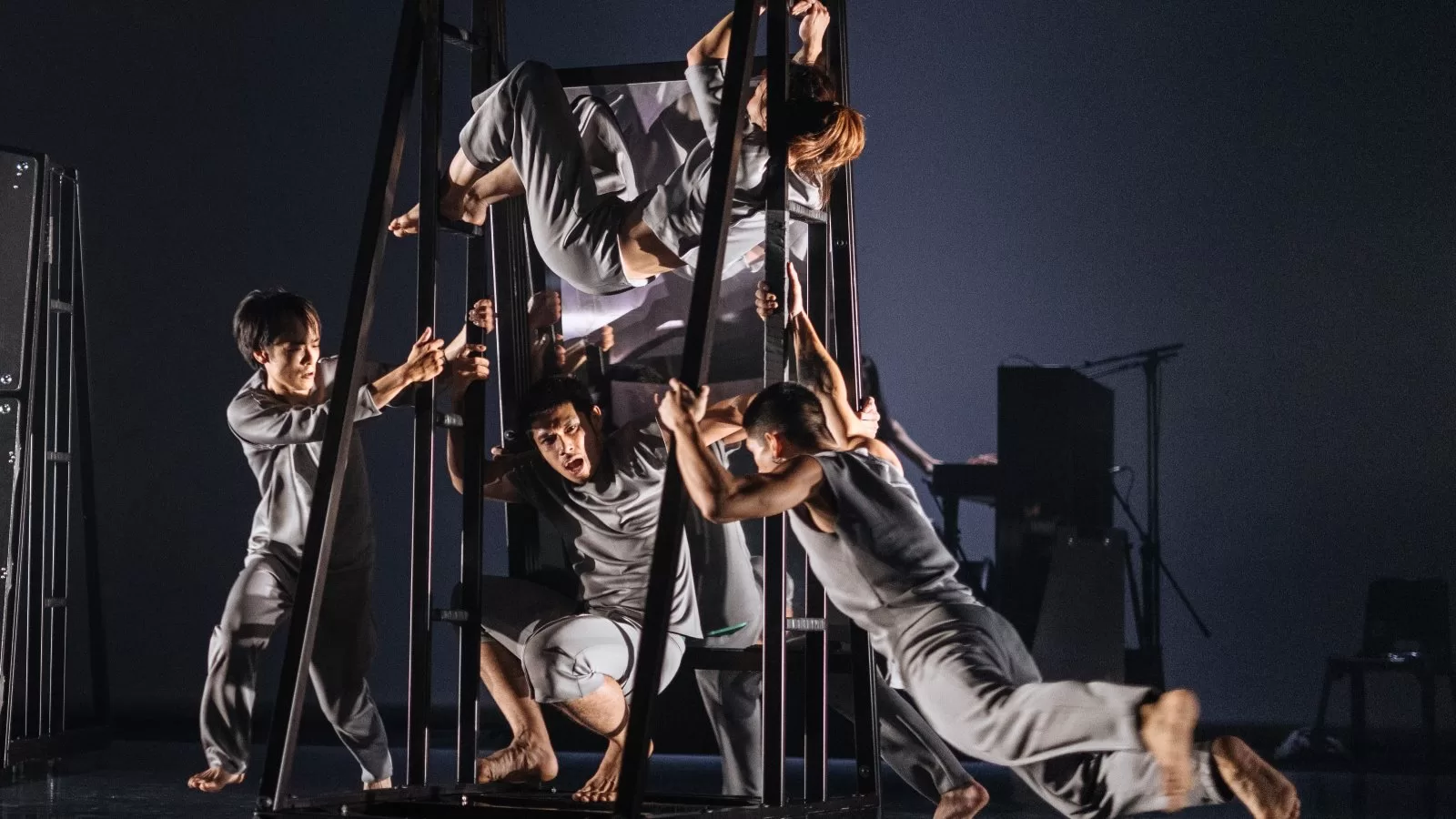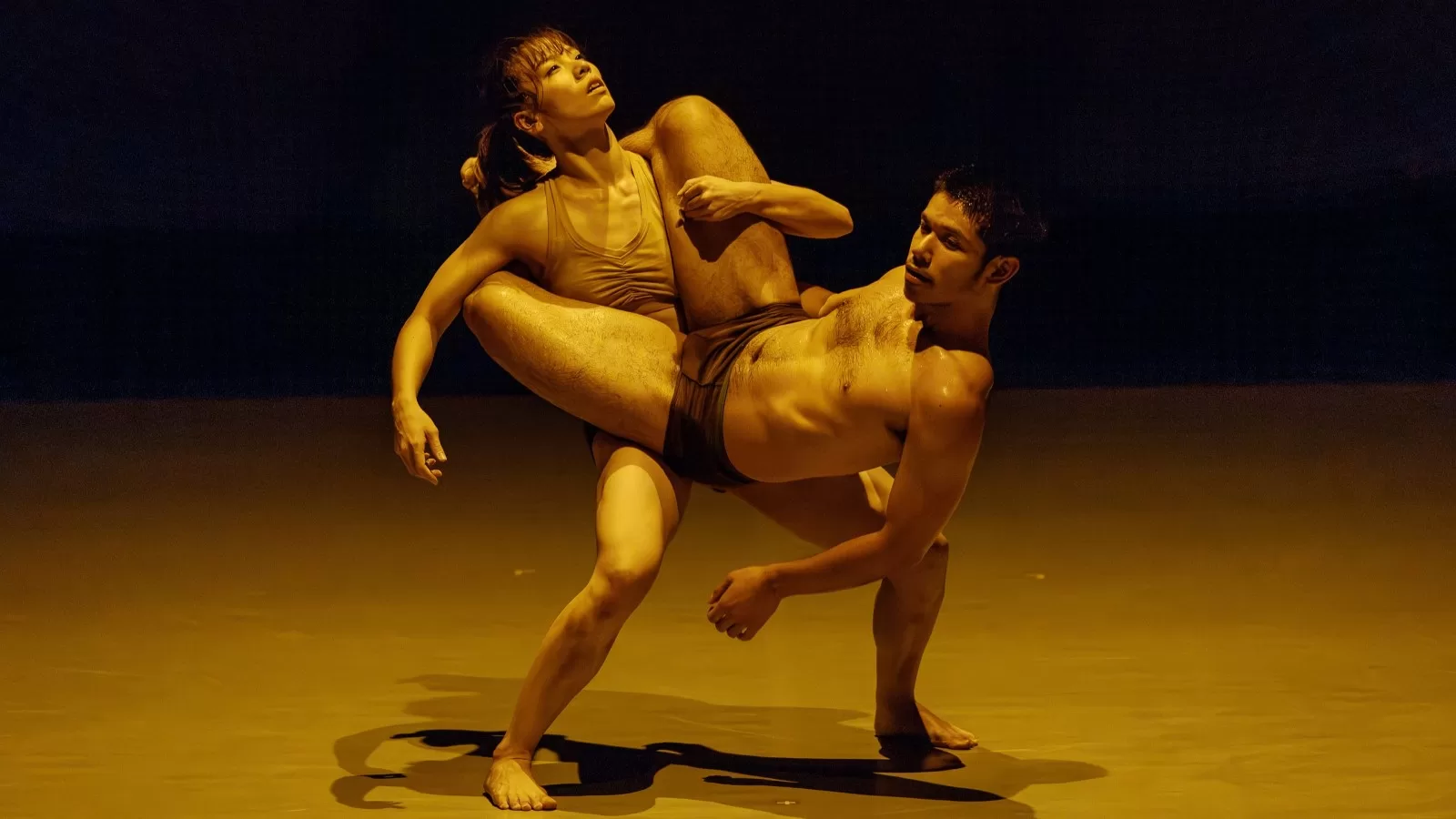Kuik Swee Boon’s Invisible Habitudes delivered a technically impressive dance performance, blending striking ensemble cohesion with moments of visual elegance. The piece explored the intangible nature of human connection through Kuik’s innovative HollowBody methodology, which uses improvisational techniques and body movement to express ideas by hollowing body cavities. The six dancers from Singapore’s The Human Expression (T.H.E.) Dance Company demonstrated remarkable fluidity and control, showcasing aesthetic unity while embracing experiential diversity. Enhanced by Wang Yu-Jun’s atmospheric score, Adrian Tan’s architectural lighting, and Loo An Ni’s minimalist costuming, this 2025 restaging of the 2018 work, originally premiered at Singapore’s da:ns festival, was both visually captivating and emotionally resonant.

The performance opened with a scene of quiet excavation. Dancers meandered across the stage, engaging with both the audience and two slanted mirror structures, their gaze deliberate, their upper bodies pushed in a controlled curve. Movements unfolded with slow precision, occasionally fractured by sharp isolations, as though tension built with each measured breath. Then, darkness. As the stage became brighter, the dancers shifted into group formations where synchronized movements contrasted with solo interruptions. A deep horn and rhythmic pulse added to the primal atmosphere.
The mirror structures played a significant role, used for physical interaction and symbolic reflection. Dancers climbed, hung from, and moved around the mirrors, with techno beats and body percussion enhancing the scene. Text in Mandarin and English accompanied a female dancer’s engagement with her reflection, emphasizing themes of fractured identity.
A highlight was a physically intense duet with electric guitar accompaniment, where two male dancers jumped and flew over each other, exploring air-borne suspension and impressive inversions. Another striking moment involved fragmented limbs emerging from behind a mirror, creating a surreal, disjointed visual effect. Opera music and minimal percussion accompanied this sequence, blending abstraction with physical expression.

A later duet explored strong yet sensual movements, enjoining their bodies through architectural partnering. Strength and trust between dancers were tested when both female and male dancers took turns to lift each other, one’s legs around the other’s upper body. The duet ended with emotional release as the male dancer was left holding empty space.
The final sequence saw the group return with rhythmic stomps and vocalizations, moving as a synchronized unit. A sense of quiet dissolution closed the evening-length production with two mirror panes oscillating, reflecting fractured light as the dancers retreated into the dark edges of the stage.

While Invisible Habitudes showcased exceptional technical brilliance and collaborative awareness, its intended commentary on identity remained underdeveloped. The piece had an undistracted sense of searching for connection —bodies witnessing, holding, releasing—but the political edge promised felt obscured beneath its sculptural elegance. Nevertheless, moments of suspended stillness and witnessing lingered long after the final blackout. The interplay between visibility and invisibility, the reflection fractured yet whole, posed questions not easily answered: Who is being witnessed? What is being seen? And can dance, in its abstraction, hold the weight of identity politics—or does it simply gesture, beautiful but incomplete?
Invisible Habitudes was performed at DPAC from 10-11 January 2025.
Charissa Lee Yi Zhen (she/her) is a graduate student at Yale University, studying Christian theology, history, liturgy, and art.
This review was generated by Artsee.Net as part of its Art Writers’ Sandbox programme.
Photo credits: Crispian Chan


Leave a Reply